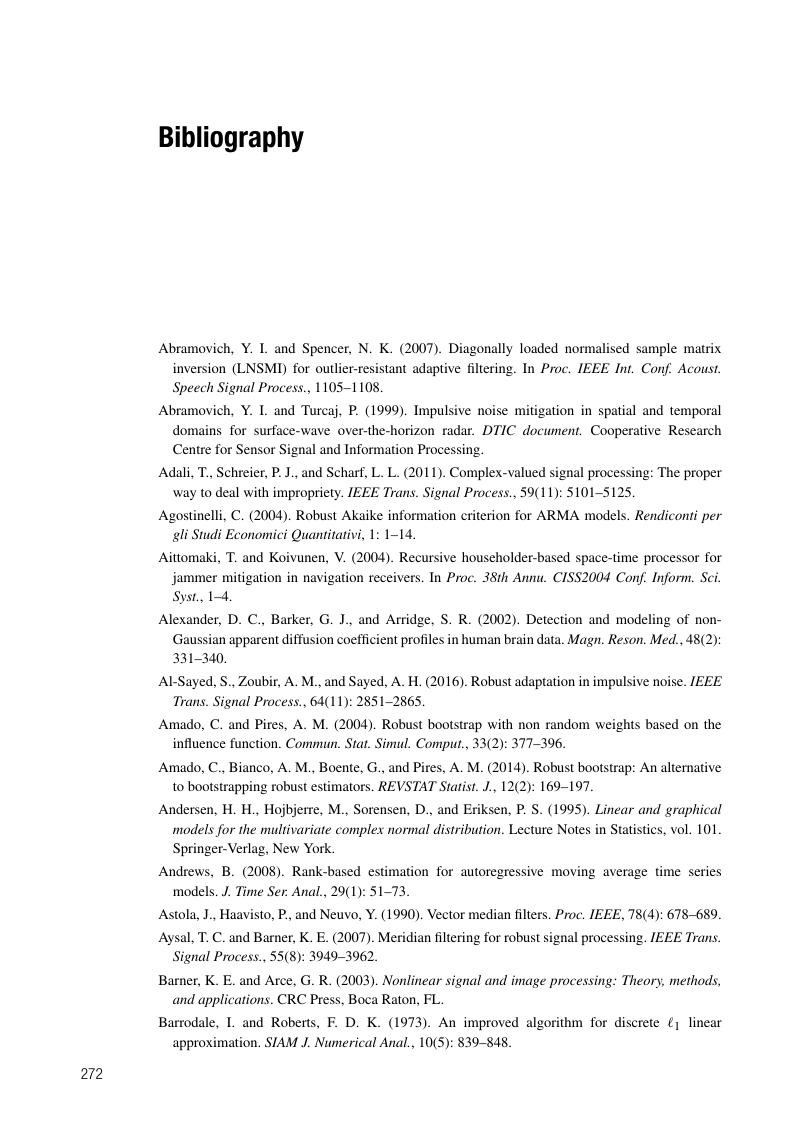Book contents
- Frontmatter
- Contents
- Preface
- List of Abbreviations
- List of Symbols
- 1 Introduction and Foundations
- 2 Robust Estimation: The Linear Regression Model
- 3 Robust Penalized Regression in the Linear Model
- 4 Robust Estimation of Location and Scatter (Covariance) Matrix
- 5 Robustness in Sensor Array Processing
- 6 Tensor Models and Robust Statistics
- 7 Robust Filtering
- 8 Robust Methods for Dependent Data
- 9 Robust Spectral Estimation
- 10 Robust Bootstrap Methods
- 11 Real-Life Applications
- Bibliography
- Index
- References
Bibliography
Published online by Cambridge University Press: 26 October 2018
- Frontmatter
- Contents
- Preface
- List of Abbreviations
- List of Symbols
- 1 Introduction and Foundations
- 2 Robust Estimation: The Linear Regression Model
- 3 Robust Penalized Regression in the Linear Model
- 4 Robust Estimation of Location and Scatter (Covariance) Matrix
- 5 Robustness in Sensor Array Processing
- 6 Tensor Models and Robust Statistics
- 7 Robust Filtering
- 8 Robust Methods for Dependent Data
- 9 Robust Spectral Estimation
- 10 Robust Bootstrap Methods
- 11 Real-Life Applications
- Bibliography
- Index
- References
Summary

- Type
- Chapter
- Information
- Robust Statistics for Signal Processing , pp. 272 - 287Publisher: Cambridge University PressPrint publication year: 2018

